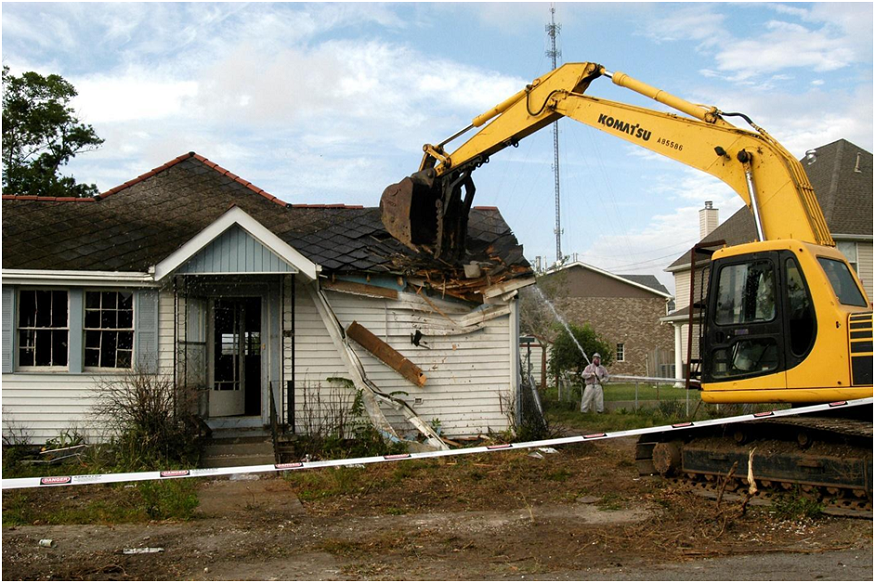Did you know that every year, Mountain Rescue teams in the UK respond to over 3,000 incidents, many caused by poor planning and inadequate gear?[1] Whether you are heading into Snowdonia or the Peak District, proper preparation is vital.
The British mountains surely look inviting, but weather conditions can shift quickly, turning a pleasant walk into a risky situation. That’s where proper mountain equipment comes in. From sturdy boots to a battery pack for camping that keeps your GPS and phone powered, having the right gear enhances both safety and enjoyment. For example, with a portable power station, you can venture deeper into the UK’s wild mountain trails, stay powered up and explore every twist and turn of the country’s rugged mountains.
This guide lists all the essential mountain equipment you need to stay safe and enjoy hiking in the UK. So, let’s get started.
Hiking Footwear and Clothing
When it comes to mountain equipment, few things are as critical as your footwear and clothing. The right gear can protect you from harsh weather, reduce the risk of injury and make your entire mountain climbing experience far more enjoyable.
Choosing Sturdy, Comfortable Hiking Boots
Your boots are your foundation. In the UK’s mountainous regions, you need hiking boots that offer strong ankle support, reliable grip and all-day comfort. Look for waterproof and breathable materials like Gore-Tex to keep your feet dry in wet conditions.
Well-fitted boots reduce the risk of blisters and help maintain balance on uneven terrain, which is essential during challenging mountain climbing routes.
Layering Clothing for Changing Mountain Weather
British mountains are known for their unpredictable weather. You can experience sunshine, wind, rain and even snow, all in a single day, which is why layering is vital.
Start with a moisture-wicking base layer to keep sweat off your skin. Add an insulating mid-layer, such as fleece or down, for warmth. Top it off with a windproof and waterproof shell. This layering system allows you to adjust your clothing as conditions change, keeping you dry, warm and comfortable throughout your hike.
Waterproof Jackets and Quick-Dry Materials
Always carry a high-quality waterproof jacket because it is a non-negotiable piece of mountain equipment. A proper jacket should be lightweight, breathable and able to withstand heavy rain.
Pair it with quick-dry trousers and shirts made from synthetic materials or merino wool, which dry faster and retain warmth even when damp. Avoid cotton, as it absorbs moisture and takes a long time to dry, increasing your risk of hypothermia in cold or wet conditions.
Navigation Tools
Accurate navigation is essential when venturing into the hills and mountains, where paths can disappear and landmarks quickly become obscured by fog or sudden weather changes. Having the right mountain equipment for navigation can mean the difference between a safe return and getting lost in the wild.
Why a Map and Compass Are Still Essential?
- Even in the digital age, a paper map and compass remain critical.
- GPS devices and smartphones can fail—batteries die, signals drop, and screens can become unreadable in rain or cold.
- A waterproof Ordnance Survey map of your hiking area and a durable compass should always be in your pack.
- Learn how to read contour lines, follow bearings, and use grid references. They are especially valuable in remote areas where trails may not be marked.
- Using traditional tools also helps you better understand the terrain and make smarter, safer route decisions.
How GPS Devices Enhance Safety and Convenience?
While traditional tools are vital, GPS devices can add an extra layer of confidence. Handheld GPS units designed for outdoor use are rugged, weather-resistant, and often come preloaded with topographic maps. They can track your precise location, monitor altitude and even help you retrace your steps if needed. This is especially helpful during longer hikes or when visibility drops.
Smartphone apps like OS Maps and ViewRanger also offer GPS-based navigation, but they rely heavily on battery life. That is why carrying a portable power solution can help ensure your digital tools stay powered throughout your journey.
Hydration and Nutrition Essentials
Staying properly fueled and hydrated is a non-negotiable part of any successful hike.
Carrying Sufficient Water and Purification Methods
Water is one of the most critical pieces of mountain equipment you can carry. Dehydration can hit fast, especially during long ascents or hot weather. While it’s ideal to carry enough water for the entire hike, this isn’t always practical on longer or multi-day treks.
In such cases, water purification tools become essential.
Lightweight options like water purification tablets, UV pens, or portable filters allow you to safely drink from natural sources such as streams or lakes. This is especially valuable during mountain climbing sports where access to clean water may be limited or unpredictable.
Lightweight, High-Energy Food Suggestions
When you are climbing or trekking through rugged terrain, your body burns a massive amount of energy. Packing high-calorie, nutrient-dense foods helps you maintain strength and focus. Look for lightweight options such as:
- Trail mix, energy bars and dried fruit
- Nut butter sachets or vacuum-packed cheese
- Instant noodles or dehydrated meals for overnight trips
These foods are easy to carry and prepare, making them perfect companions for an intense climb, mountain exercise or long mountain days. Regular snacks and hydration breaks help avoid fatigue, altitude-related issues, and poor decision-making.
Shelter and Sleeping Gear
In the ever-changing conditions of the UK’s mountains, carrying the proper shelter and sleeping equipment offers comfort and safety. The right gear allows you to rest, recover, and stay protected from the elements during overnight or emergency stops in the wild.
Benefits of a Lightweight Tent or Bivy Sack
- Protection from the Elements: A tent or bivy sack shields you from wind, rain, and cold conditions that can change quickly in the British mountains.
- Emergency Shelter: Useful in unplanned situations such as getting lost or injured during a climbing mountain exercise.
- Compact and Portable: Modern designs are lightweight and pack down small, making them perfect for mountain climbing sports where every gram counts.
- Quick Setup: This is especially useful with bivy sacks, which can be pitched in tight spots or uneven terrain. They are also perfect for solo hikers or those involved in mountain climbing sports, where fast setup and mobility are priorities.
- Minimises Heat Loss: Creates a controlled environment to retain warmth, reducing the risk of hypothermia during overnight stays.
Suitable Sleeping Bags and Pads for Various Climates
UK mountain conditions can be damp and chilly year-round, even in summer. So, choosing the right sleeping bag is essential. A three-season sleeping bag is often the most versatile option, offering enough insulation for cold nights without excessive bulk.
For winter or high-altitude trips, consider a four-season bag with down or synthetic fill that can handle sub-zero temperatures. Synthetic bags perform better in wet conditions, while down offers a superior warmth-to-weight ratio but needs to stay dry.
Pair your sleeping bag with an insulated sleeping pad, which not only adds comfort but also prevents heat loss to the cold ground. Look for self-inflating or closed-cell foam pads that are lightweight and durable, making them ideal for mountain climbing or long-distance treks.
Safety and First Aid Equipment
Safety should never be an afterthought when heading into the mountains. Accidents can happen quickly (even on well-marked trails), and in remote areas, help can be hours away. That’s why carrying a comprehensive first aid kit is a crucial part of your mountain equipment. It allows you to treat minor injuries on the spot and manage more serious situations until help arrives.
A proper first aid kit for mountain hiking or climbing should include:
- Bandages, plasters, and sterile dressings
- Antiseptic wipes and ointment.
- Painkillers and anti-inflammatory tablets.
- Blister treatment (like moleskine or gel pads).
- Tweezers, scissors, and medical tape.
- Emergency blanket and CPR face shield.
In addition to first aid supplies, every hiker should carry a few essential safety tools as part of their mountain equipment, such as:
-
- Whistle: A loud whistle is an effortless and effective way to signal for help, carrying further than your voice and is useful in emergencies.
- Headlamp (with extra batteries): Essential for low-light conditions or unexpected delays, a waterproof headlamp ensures hands-free visibility. Always pack spare batteries.
- Multi-Purpose Knife or Tool: A compact multi-tool or knife is invaluable for a wide range of tasks: cutting rope, repairing gear, opening food, or even assisting with first aid. Choose one with features like a blade, a screwdriver, scissors, and a can opener for maximum versatility. It’s a practical tool that earns its place on any mountain equipment checklist.
Power Solutions on the Trail
When heading into the mountains, staying connected and powered up can be critical. A suitable power station not only offers convenience but also provides safety on rough trails. Whether you are charging your phone, running a GPS device, or powering emergency equipment, having a reliable portable power source can be a game-changer.
Jackery, a leading name in outdoor energy solutions, offers several outstanding portable power stations designed to meet the needs of short hikes and extended mountain adventures. Here is a closer look at two of their best-performing models:
Jackery Explorer 1000 v2: Compact Power for Shorter Trips
The Jackery Explorer 1000 v2 Portable Power Station is perfect for day hikes, overnight camping, or short mountain getaways. With a 1070Wh capacity and 1500W output, it provides 50% more power than its predecessor, easily running devices like mini-fridges, kettles or laptops. This battery pack for camping supports dual USB-C fast charging (up to 100W), making it ideal for topping up essential electronics on the go.
Thanks to Emergency Super Charging via the Jackery app, the Jackery Explorer 1000 v2 Portable Power Station can be fully recharged in as little as one hour—perfect when you need power in a pinch. It’s also whisper-quiet at under 22dB and features a highly durable LiFePO4 battery rated for 4,000 charge cycles (up to 10 years of daily use). Weighing only 23.8 lbs and 18% smaller than earlier models, it’s lightweight and easy to carry with its foldable handle. Recharge it through three methods: an AC wall outlet, a car, or solar panels with Jackery SolarSaga Solar Panels. This is the ultimate portable power solution for compact, stress-free adventures.
Jackery Explorer 2000 v2: High-Capacity Power for Extended Adventures
For longer treks, base camps, or multi-day hikes with heavier power demands, the Jackery Explorer 2000 v2 Portable Power Station is your go-to solution. With an impressive 2042Wh capacity and 2200W output, this powerhouse can run most household appliances from electric grills to portable air conditioners. It includes 2 AC outlets, 1 USB-A (18W), and 2 USB-C ports (100W + 30W), enabling you to charge multiple devices at once.
Despite its capacity, it’s the world’s first 2kWh LiFePO4 power station built with advanced EV-grade Cell-to-Body (CTB) technology. It weighs just 38.6 lbs and is smaller and lighter than other models in its class, making it a surprisingly portable choice for its power level. With Jackery’s Emergency Super Charge feature, it recharges in only 1.33 hours (via app-enabled AC input). It also supports car and solar charging, making it highly versatile for any trail condition. The Jackery Explorer 2000 v2 Portable Power Station is the ideal portable power companion for serious outdoor enthusiasts and extended mountain hikes.
Other Useful Mountain Equipment
While power solutions are essential for keeping your devices running, other pieces of mountain equipment play a crucial role in ensuring both comfort and safety during your hike. Here are three often-overlooked yet vital additions to your gear list:
. Trekking Poles for Stability
Trekking poles are a must-have item for any mountain hike, especially on uneven, steep, or slippery terrain. They provide additional stability and reduce strain on your knees and joints, particularly when descending. By distributing your weight more evenly across your body, trekking poles help improve balance, minimise fatigue, and prevent potential falls.
Modern trekking poles are lightweight, foldable and often made from durable materials like carbon fibre or aluminium. Whether you are crossing streams or navigating loose gravel paths, they are a smart piece of mountain equipment to enhance safety and endurance on long hikes.
-
Sunglasses and Sunscreen for Sun Protection
UV exposure increases significantly with altitude by around 10% for every 1,000 meters gained. That’s why sunglasses and sunscreen are non-negotiable mountain equipment. A good pair of UV-protection sunglasses shields your eyes from harmful rays, snow glare, and dust. Look for wraparound frames or polarised lenses for better coverage.
Moreover, a broad-spectrum sunscreen (SPF 30 or higher) is essential for protecting exposed skin. Don’t forget lip balm with SPF as well. Apply regularly, especially during summer hikes or snowy conditions, where sunburn risk is higher due to reflective surfaces.
-
Lightweight Backpacks with Ergonomic Designs
A reliable backpack is one of the most fundamental pieces of mountain equipment you will carry. But not all backpacks are created equal. Lightweight models with ergonomic, ventilated back panels and padded shoulder straps can significantly reduce discomfort during long treks. Look for adjustable chest and hip belts to help distribute weight evenly and minimise pressure on your shoulders.
Many modern hiking backpacks also come with hydration bladder compartments, quick-access pockets, and weather-resistant materials, making them perfect for keeping your gear organised, dry and accessible on the trail.
Conclusion
Proper preparation is key to a safe and enjoyable mountain adventure. With the right mountain equipment, such as trekking poles, sun protection, a reliable backpack, and a portable power solution, you can hike confidently and comfortably. Whether it’s a short day trip or a multi-day trek, being well-equipped ensures you are ready for whatever the trail throws your way.
References
[1] The current demanding situation of Mountain Rescue teams across England and Wales. Available at: https://thebmc.co.uk/en/the-current-demanding-situation-of-mountain-rescue-teams-across-england-and-wales (Accessed: August 21, 2025)





